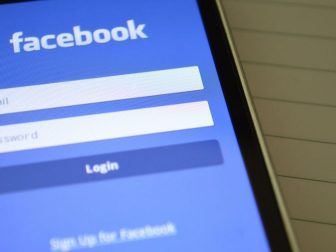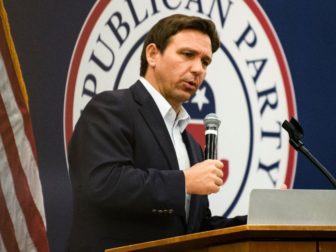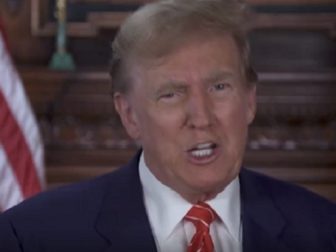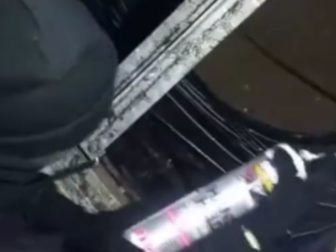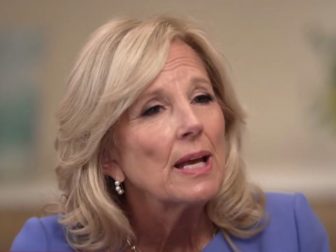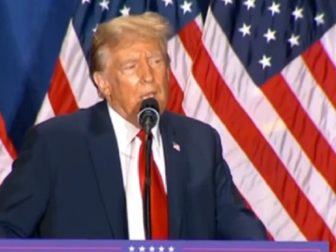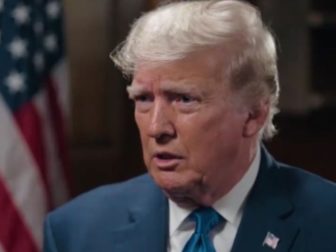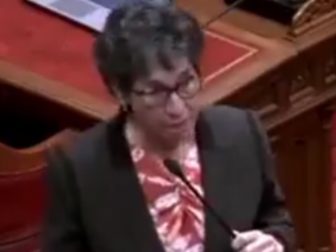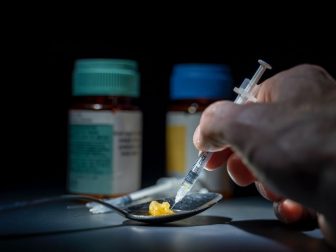Secret Service Agent Who Was Feet from JFK During Assassination Breaks Silence, Says Official Story Isn't Right
A former Secret Service agent on then-first lady Jackie Kennedy’s security detail in Dallas in November 1963 — when President John F. Kennedy was assassinated — has come forward with new information that may place the findings of the Warren Commission in doubt.
Paul Landis — who was standing on the running board of the car immediately behind the first couple on that fateful Nov. 22 — said he was the one who found the so-called “pristine” or “magic” bullet and placed it on President Kennedy’s stretcher at Parkland Memorial Hospital.
The implications of that revelation may be significant and cast doubt on the theory that assassin Lee Harvey Oswald was the lone gunman in the killing.
Landis, now 88, recounted to New York Times reporter Peter Baker that he originally noticed the bullet in the back seat of the limousine carrying the couple as he was assisting the first lady out of the car at Parkland.
He slipped it into his coat pocket and headed into the hospital, so no one among the many onlookers gathering around would take it from the car.
His intention was to give it to his supervisor, but in the confusion of the moment, he put it on Kennedy’s stretcher instead.
Landis, 28 at the time, thought it might help the doctors in their efforts to treat the president.
A hospital worker later found the bullet on another stretcher when he was moving stretchers.
[firefly_poll]
The Warren Commission concluded the stretcher the bullet was found on had been used for then-Texas Gov. John Connally, who was in the Kennedys’ limousine and had also been shot. That conclusion was the origin of the “magic bullet” theory.
The Warren Commission found that Oswald fired three shots from his C2766 Mannlicher-Carcano rifle. The first was the magic bullet that hit Kennedy in the back, made a 90-degree turn, and came out of his neck.
The bullet then traveled on to hit Connally near his right arm, followed by his right wrist and then his left thigh. Despite the path it traveled, the bullet stayed in pristine condition.
The new #JFK narrative, after factoring in the claims of retired SS Agent Landis: there is NO support for the #singlebullettheory, as that nearly pristine bullet (CE399) got no farther than Impact Point #1. Now to account for the rest of JFK’s injuries, and all of Connally’s… pic.twitter.com/83fGubBBgU
— Tim Fattig (@timfattig) September 10, 2023
The second bullet went astray, perhaps hitting a sidewalk curb — the shards of which caused a bystander to be cut on the face.
The third shot was the fatal one to Kennedy’s head.
The JFK “Magic Bullet”
*7 wounds through 2 people*
Mysteriously found in pristine condition on hospital stretcher
QUESTION: Was this bullet even discharged?? Where it’s burnt end?
…OR, was it simply shoved through the barrel with a cleaning rod ? pic.twitter.com/R5SMEw9O0S
— Jimmy Corsetti (@BrightInsight6) August 14, 2023
Presidential historian James Robenalt — who assisted Landis in his new book “The Final Witness,” due for release next month — further detailed in a Vanity Fair article on Saturday the implications of the former Secret Service agent’s revelation of where he found the pristine bullet.
“In his book, Paul Landis now says that when Jackie Kennedy stood up to enter Parkland, he looked over and saw that a bullet was improbably sitting on top of the rear seat of the limo, right around the spot where the limo’s detachable roof, which had been removed that day, would have otherwise been affixed to the trunk,” Robenalt wrote.
“Also, amid the blood and gore, Landis remembers, were two bullet fragments on the back seat, next to where Jackie had been sitting,” he added.
Doctors discovered three wounds on Kennedy’s body: the back right shoulder, the neck and the head.
If what Landis said is true, the bullet he found likely caused the wound to the back and potentially came out when Kennedy’s body was moved or when he bounced back after the fatal shot to his head.
Doctors performing the autopsy at Bethesda Naval Hospital, near Washington, D.C., determined JFK’s back wound did not go deep, according to Robenalt.
“Two doctors found that they could not pass more than half a pinky finger into the opening. Metal probes likewise uncovered no path of the bullet through the body,” he wrote.
Further, doctors at Parkland performing surgery on Kennedy, believed the neck injury was an entry wound because of its neatness, which means the bullet would have had to have been fired from in front of the car if their assessment was true.
In other words, a second shooter — perhaps positioned in the so-called “grassy knoll” area.
Robenalt noted that a review of the Zapruder film made by a bystander in Dealey Plaza in Dallas showed that Connally reacted to being shot about one second after Kennedy reached for his neck, suggesting another bullet besides the pristine one caused the governor’s wounds.
Oswald could not have fired his bolt action rifle so quickly and accurately to have sent an additional bullet into the limousine hitting Connally, the thinking goes.
Despite Landis’ current account, he did not make mention of finding and taking the pristine bullet from the car in two contemporaneous reports he submitted following the assassination.
His first short report didn’t even mention Parkland Hospital, and the second one, written three days later, did not raise the issue of the bullet he found either.
It wasn’t until 2014 that he realized the official account of the bullet differed from his memory, he told the Times, but he didn’t come forward then out of fear he had made a mistake by not reporting it in November 1963.
“I didn’t want to talk about it,” Landis said. “I was afraid. I started to think, did I do something wrong? There was a fear that I might have done something wrong and I shouldn’t talk about it.”
“I just think it had been long enough that I needed to tell my story.” Paul Landis, one of the Secret Service agents just feet away from John F. Kennedy when he was struck down in Dallas in 1963, is breaking his silence for the first time. https://t.co/Eocm44bjZL
— The New York Times (@nytimes) September 9, 2023
He was never called to testify before the Warren Commission, nor did he read its findings at the time — still traumatized by the events he had witnessed.
Landis in fact left the Secret Service six months after the JFK assassination.
Former Secret Service agent Clint Hill, who famously leapt on the back of the Kennedys’ limousine in an attempt to protect the president, discouraged Landis from coming forward in a 2014 email, reviewed by the Times.
“Many ramifications,” Hill warned Landis.
Hill told NBC News after the Times story that he doubts Landis’ account.
“It doesn’t make any sense to me that he’s trying to put [the bullet] on the president’s gurney,” Hill said.
Clint Hill’s first public commentary on the claims of his former Secret Service colleague. Paul Landis.
Hill was the agent who risked life + limb when he jumped on the rear trunk of JFK’s limo during the assassination.
Lots of problems w/ embellishments in the Landis account pic.twitter.com/h1IS0Mp9qT— Gerald Posner (@geraldposner) September 10, 2023
Landis has been reluctant to speculate about the larger implications of his account regarding the pristine bullet.
“There’s no goal at this point,” he told the Times of his reason for speaking out. “I just think it had been long enough that I needed to tell my story.”
He has always believed Oswald was the lone gunman, but, “At this point, I’m beginning to doubt myself,” he said. “Now I begin to wonder.”
This article appeared originally on The Western Journal.


